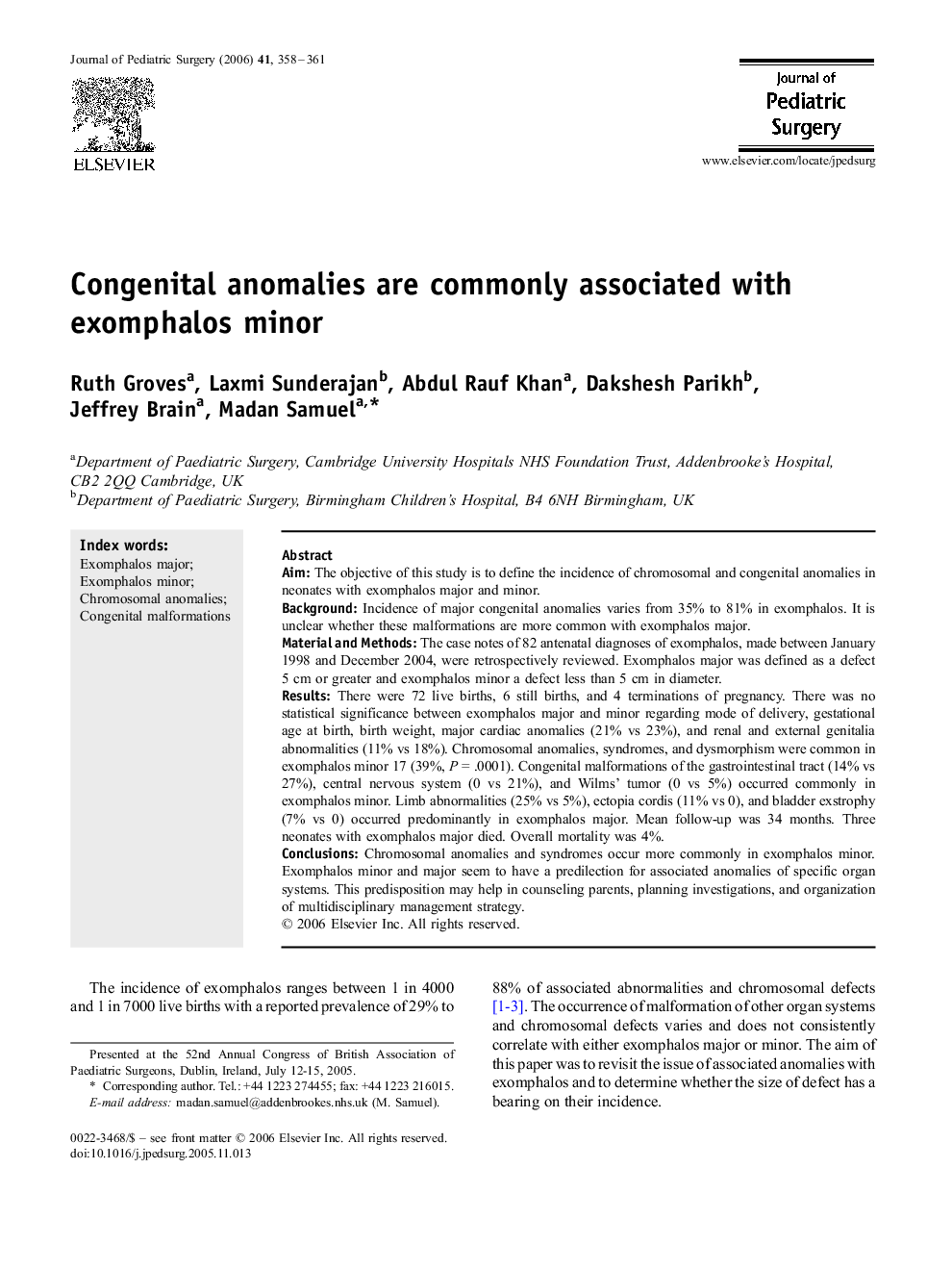| کد مقاله | کد نشریه | سال انتشار | مقاله انگلیسی | نسخه تمام متن |
|---|---|---|---|---|
| 4160986 | 1273856 | 2006 | 4 صفحه PDF | دانلود رایگان |

AimThe objective of this study is to define the incidence of chromosomal and congenital anomalies in neonates with exomphalos major and minor.BackgroundIncidence of major congenital anomalies varies from 35% to 81% in exomphalos. It is unclear whether these malformations are more common with exomphalos major.Material and MethodsThe case notes of 82 antenatal diagnoses of exomphalos, made between January 1998 and December 2004, were retrospectively reviewed. Exomphalos major was defined as a defect 5 cm or greater and exomphalos minor a defect less than 5 cm in diameter.ResultsThere were 72 live births, 6 still births, and 4 terminations of pregnancy. There was no statistical significance between exomphalos major and minor regarding mode of delivery, gestational age at birth, birth weight, major cardiac anomalies (21% vs 23%), and renal and external genitalia abnormalities (11% vs 18%). Chromosomal anomalies, syndromes, and dysmorphism were common in exomphalos minor 17 (39%, P = .0001). Congenital malformations of the gastrointestinal tract (14% vs 27%), central nervous system (0 vs 21%), and Wilms' tumor (0 vs 5%) occurred commonly in exomphalos minor. Limb abnormalities (25% vs 5%), ectopia cordis (11% vs 0), and bladder exstrophy (7% vs 0) occurred predominantly in exomphalos major. Mean follow-up was 34 months. Three neonates with exomphalos major died. Overall mortality was 4%.ConclusionsChromosomal anomalies and syndromes occur more commonly in exomphalos minor. Exomphalos minor and major seem to have a predilection for associated anomalies of specific organ systems. This predisposition may help in counseling parents, planning investigations, and organization of multidisciplinary management strategy.
Journal: Journal of Pediatric Surgery - Volume 41, Issue 2, February 2006, Pages 358–361